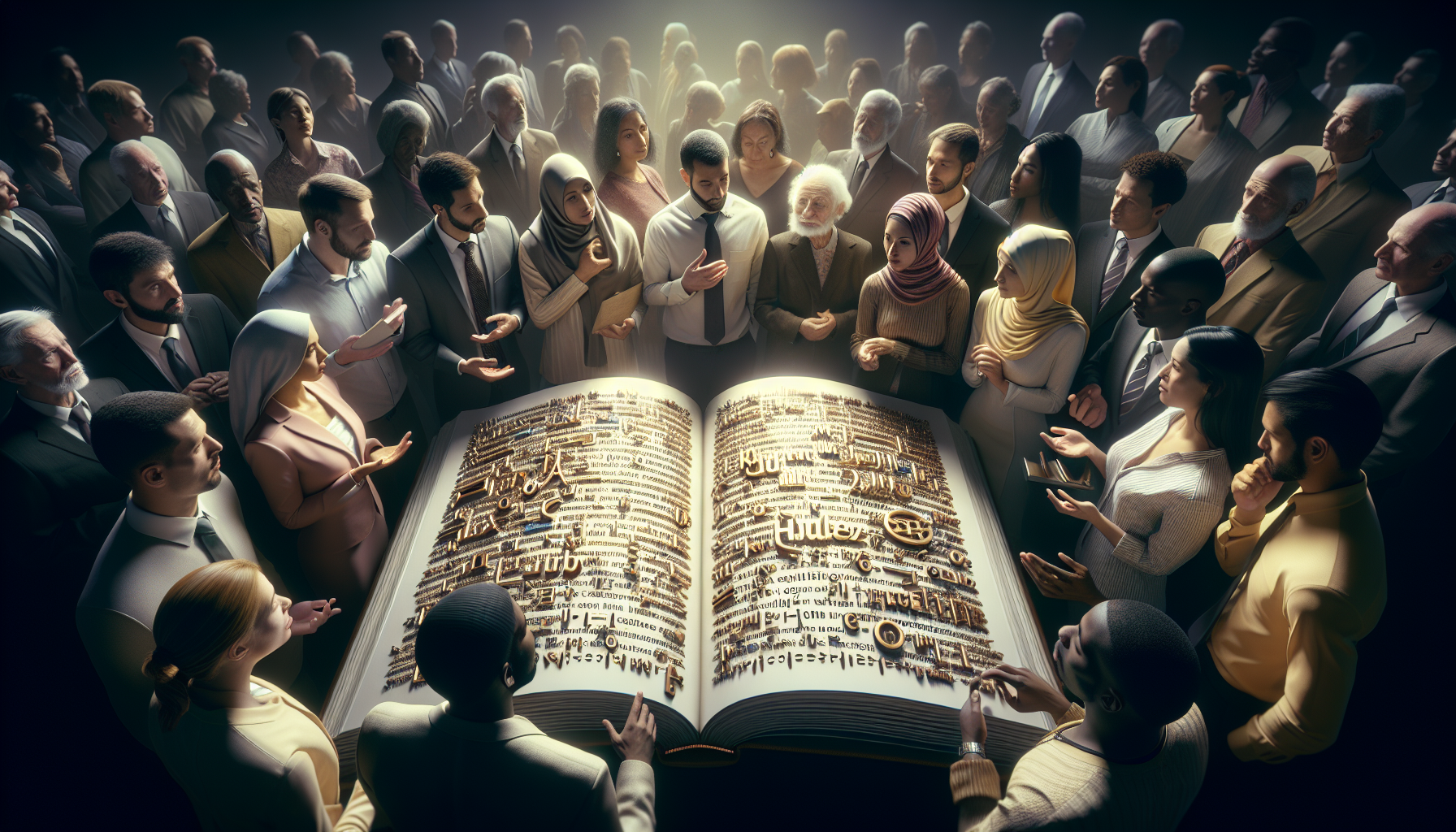In a world where globalization is rapidly dissolving boundaries and merging cultures, understanding the intricate tapestry of cultural symbols has never been more essential. Cultural symbols—those emblems, icons, and rituals that encapsulate the essence of a society—serve as powerful communicative tools that transcend language and time. They tell stories of ancient civilizations, reflect societal values, and provide insight into the collective psyche of a people. But how often do we pause to ponder the deeper meanings behind these ubiquitous symbols? Why does the lotus flower hold such reverence in Asian cultures? What makes the color black a symbol of mourning in some societies, yet a representation of power and elegance in others? As we embark on this fascinating journey of cultural symbol decoding, we will peel back layers of history and tradition, unlocking the hidden meanings that shape our world today.
The adventure of decoding cultural symbols is akin to solving an elaborate puzzle. Each symbol is a piece that, when put together with others, reveals a larger picture of human experience and connection. Yet, unlike puzzles that have a single solution, cultural symbols can have multiple interpretations, each shaped by context, history, and personal perspective. As we delve into this topic, we will explore how symbols have evolved over time, adapting to changes in society while retaining their core significance. From religious icons to national flags, from traditional attire to culinary customs, each symbol carries a narrative that is rich with meaning and purpose. We will examine the stories behind these symbols, deciphering how they communicate complex ideas and emotions, and how they influence interactions in a multicultural world.
As we uncover the secrets behind cultural symbols, we’ll also look at the role of tradition and its influence on modern identity. Traditions serve as a bridge between the past and present, preserving the wisdom of ancestors while adapting to contemporary realities. In this exploration, we’ll analyze how symbols act as vessels of tradition, preserving cultural heritage and reinforcing communal bonds. Moreover, we will investigate the dynamic nature of symbols—how they can be both timeless and ever-changing, reflecting shifts in societal norms and values. Through case studies and expert insights, we will reveal how cultural symbols help individuals navigate their world, offering a sense of belonging and continuity amidst the ever-evolving landscape of human experience.
Prepare to immerse yourself in a world where every symbol has a story, every tradition a lesson, and every icon a secret waiting to be unveiled. This article will guide you through the fascinating realm of cultural symbols, offering a comprehensive understanding that is both enlightening and thought-provoking. Whether you are a cultural enthusiast, a curious traveler, or simply someone intrigued by the hidden meanings woven into the fabric of our global society, this exploration promises to enrich your perspective and deepen your appreciation for the diverse and interconnected world we inhabit. Let us embark on this captivating journey, unveiling the secrets of cultural symbol decoding and unlocking the hidden meanings behind traditions and icons. 🌍✨
Understanding Cultural Symbols: A Deep Dive
Cultural symbols are the cornerstone of human societies, embodying collective histories, beliefs, and values. These symbols, ranging from icons like the Christian cross to traditions like the Japanese tea ceremony, hold layers of meanings that are often not immediately apparent. In unraveling these symbols, one gains insight into the shared human experience across different cultures and epochs.
Symbolism permeates our daily lives, whether we’re aware of it or not. It shapes our identities, influences our behaviors, and connects us to our heritage. The cross-cultural study of these symbols provides a framework for understanding how different societies communicate shared values and traditions. This exploration is not only intellectually enriching but also fosters a deeper appreciation of the world’s diverse cultural tapestry.
For instance, let’s consider the lotus flower, a common symbol in various Asian cultures. In Buddhism, it represents purity of the body, speech, and mind, as if floating above the muddy waters of attachment and desire. Meanwhile, in Hinduism, it symbolizes beauty and prosperity. These interpretations showcase the rich tapestry of meanings a single symbol can hold, influenced by cultural context and religious beliefs. To truly appreciate cultural symbols, one must delve into these contexts and histories, unlocking the myriad interpretations and significances they carry.
The Evolution of Symbols Across Cultures
The evolution of cultural symbols is a testament to human creativity and adaptability. As societies evolve, so do their symbols, reflecting changes in societal values, political landscapes, and technological advancements. The swastika is a prime example, originally a symbol of auspiciousness in Hinduism, Buddhism, and Jainism, but it took on a drastically different meaning during the 20th century due to its appropriation by Nazi Germany.
This transformation underscores how symbols can shift in meaning depending on historical contexts. The swastika’s transition from a symbol of good fortune to one of hate and intolerance exemplifies the fluid nature of cultural symbols. Understanding these shifts requires a multidisciplinary approach, blending history, sociology, and anthropology to decipher the layers of significance embedded within these symbols.
Moreover, the digital age has accelerated the evolution of symbols. Emojis, once mere text characters, have become powerful symbols of emotion and communication, transcending linguistic barriers. This digital symbolism is continuously evolving, influenced by internet culture and global interconnectedness. Emojis like the “heart” or the “thumbs up” have universal recognition, yet they may carry different nuances in various cultural contexts.
Decoding Symbols in Modern Contexts
The modern era presents a unique challenge for the interpretation of cultural symbols, as globalization has both homogenized and diversified cultural expressions. With the advent of the internet and social media, symbols can be rapidly disseminated, adopted, and adapted by diverse audiences worldwide. This dynamic environment necessitates a nuanced understanding of how symbols are interpreted in contemporary settings.
Consider the peace symbol, originally designed for the British nuclear disarmament movement in 1958. Over the decades, it has been embraced by various anti-war movements worldwide, representing a broader call for peace and harmony. Its simplicity allows for widespread recognition, yet its interpretation can vary significantly based on cultural and political contexts.
Similarly, fashion has become a fertile ground for symbolic expression. Brands often incorporate cultural symbols into their designs to evoke certain feelings or convey a message. However, this practice can lead to controversies, especially when symbols are appropriated without understanding their cultural significance. The debate over cultural appropriation highlights the importance of respecting and accurately representing cultural symbols.
The Role of Media in Shaping Symbolic Meanings
Media plays a pivotal role in shaping and reshaping the meanings of cultural symbols. Films, television shows, and news media often introduce symbols to new audiences, influencing their interpretations. For instance, Hollywood movies have popularized symbols like the American flag, portraying it as a beacon of freedom and democracy. However, this portrayal may not resonate with all audiences, especially those with differing political views.
Social media platforms further complicate this landscape, as symbols can be rapidly shared and interpreted in countless ways. Hashtags, memes, and viral trends often repurpose traditional symbols for new contexts, blurring the lines between cultural heritage and contemporary usage. This phenomenon underscores the dynamic nature of cultural symbols in the digital age, where meanings can be constantly negotiated and contested.
Understanding these modern dynamics requires critical engagement with media literacy and an awareness of the power structures influencing symbolic representations. By analyzing how media shapes our understanding of symbols, we can better appreciate the complexities of cultural communication in a globalized world.
The Impact of Symbols on Identity and Community
Cultural symbols are integral to the formation of individual and collective identities. They serve as markers of cultural heritage, allowing individuals to connect with their ancestry and community. Symbols like national flags, traditional attire, or religious icons embody shared histories and values, fostering a sense of belonging and unity.
For indigenous communities, symbols play a crucial role in preserving cultural heritage and asserting identity. Traditional art forms, language, and rituals are imbued with symbolic meanings that communicate ancestral wisdom and values. These symbols are vital for cultural survival, especially in the face of globalization and cultural homogenization.
However, the use of symbols in identity formation can also lead to conflicts, especially when different groups claim ownership over the same symbols. This tension is evident in geopolitical disputes, where symbols like territorial flags or historical monuments become focal points for asserting sovereignty and cultural identity.
Exploring Symbolic Interactions Across Cultures
Intercultural interactions often involve the exchange and reinterpretation of symbols. This exchange can lead to new cultural syntheses, where symbols are adapted and integrated into different cultural contexts. However, it can also result in misunderstandings, especially when symbols are interpreted through the lens of different cultural frameworks.
To navigate these interactions, one must approach cultural symbols with openness and curiosity. Engaging with cultural symbols from a place of respect and empathy allows for meaningful cross-cultural dialogue and understanding. By appreciating the diversity of symbolic expressions, we can celebrate the richness of the human experience and foster a more inclusive world.
| Symbol | Original Meaning | Modern Interpretation |
|---|---|---|
| Swastika | Auspiciousness and good fortune in Hinduism, Buddhism, and Jainism | Hate symbol due to Nazi appropriation |
| Peace Symbol | Nuclear disarmament | Anti-war, general peace advocacy |
| Lotus Flower | Purity and spiritual awakening | Beauty, prosperity, and enlightenment |
To delve deeper into the impact of cultural symbols on society, I recommend watching this insightful video: Symbolism in Modern Culture by Symbolic Insights Channel. It provides a comprehensive overview of how symbols shape our perceptions and interactions.
Conclusion
Unveiling the secrets of cultural symbol decoding is a fascinating journey that not only enriches our understanding of diverse traditions and icons but also deepens our appreciation for the intricate tapestry of human culture. Throughout this article, we have explored the multifaceted nature of symbols and their profound impact on societies across the globe. By examining various cultural symbols, from ancient hieroglyphs to modern logos, we’ve uncovered the layers of meaning that these icons hold and the stories they tell about the people who created and revered them.
One of the key points we discussed is the universal nature of symbols. While specific symbols may vary significantly from one culture to another, the underlying concept of using visual representations to convey complex ideas is a shared human trait. This universality underscores the importance of studying symbols as a way to foster cross-cultural understanding and empathy. By decoding these symbols, we gain insight into the values, beliefs, and histories of different cultures, allowing us to build bridges across perceived divides.
Another significant aspect covered in the article is the evolution of symbols over time. As societies change, so too do the meanings attached to their symbols. This dynamic nature of symbols highlights the importance of context in decoding their meanings. Historical events, technological advancements, and social movements can all influence how a symbol is interpreted, demonstrating that symbols are not static but rather living elements of culture. This adaptability makes them powerful tools for both preserving cultural heritage and navigating contemporary challenges.
The article also delved into the role of symbols in identity formation and community building. Symbols often serve as markers of identity, representing shared experiences, values, and aspirations. They can unite individuals within a culture while also distinguishing them from others. Understanding the symbols of a community can therefore provide valuable insights into its social fabric and dynamics. Moreover, symbols can be instrumental in shaping collective identities, whether in the context of national pride, religious affiliation, or social movements.
In addition to these points, we highlighted the importance of critical thinking and sensitivity in the process of symbol decoding. Misinterpretations can lead to cultural misunderstandings and perpetuate stereotypes, which is why approaching symbols with an open mind and a willingness to learn is crucial. By engaging with symbols thoughtfully and respectfully, we can foster a more inclusive and nuanced understanding of the world around us.
The exploration of cultural symbols is not just an academic exercise; it has practical implications for various fields, including art, marketing, politics, and education. For instance, marketers can harness the power of symbols to resonate with diverse audiences, while educators can use them as tools to teach cultural awareness and critical thinking. In politics, symbols can be used to rally support or articulate complex ideas succinctly.
As we conclude this exploration of cultural symbol decoding, it is clear that symbols are much more than mere representations. They are potent conveyors of meaning and emotion, capable of shaping perceptions and influencing behavior. By unlocking the hidden meanings behind traditions and icons, we not only gain a deeper understanding of our own cultures but also cultivate a greater appreciation for the diversity and richness of human expression.
We encourage you, dear reader, to continue this journey of discovery. Reflect on the symbols that hold significance in your life and consider their meanings and origins. Engage with others to learn about the symbols that are important to them. Share your insights and experiences, and invite others to join the conversation. In doing so, we can collectively expand our knowledge and foster a more interconnected and empathetic world.
[For further reading on the subject, consider exploring resources from the Smithsonian Institution (https://www.si.edu) or the British Museum (https://www.britishmuseum.org). These institutions offer extensive collections and research on cultural symbols and their histories.]
[Note: Please verify the links provided for accuracy and relevance as they are included based on their reputation and contributions to the field of cultural studies.]
Toni Santos is a visual storyteller and educational ethnographer whose work celebrates the fluid knowledge systems of nomadic cultures. Through art and research, Toni brings attention to how learning has thrived outside traditional institutions—rooted in movement, oral tradition, and deep connection to land and community.
Guided by a passion for ancestral wisdom, adaptive pedagogy, and cultural resilience, Toni explores the tools, rituals, and environments that once shaped the minds of travelers, herders, and migrating communities. Whether illustrating storytelling circles beneath open skies, wearable mnemonic devices, or maps woven into textiles, Toni’s work honors learning as a lived, sensory, and communal experience.
With a background in visual anthropology and intercultural design, Toni reconstructs the educational models of mobile societies through images and narratives that restore their dignity and relevance in today’s world.
As the creative mind behind Vizovex, Toni shares a rich tapestry of visual essays, artifact-inspired art, and curated stories that reveal the genius of teaching and learning on the move.
His work is a tribute to:
The wisdom of learning through journey, rhythm, and story
The spatial and environmental intelligence of nomadic cultures
The power of intergenerational knowledge passed outside walls
Whether you’re an educator, researcher, or lifelong learner, Toni invites you to step into a world where education is not confined, but carried—one step, one song, one shared insight at a time.





